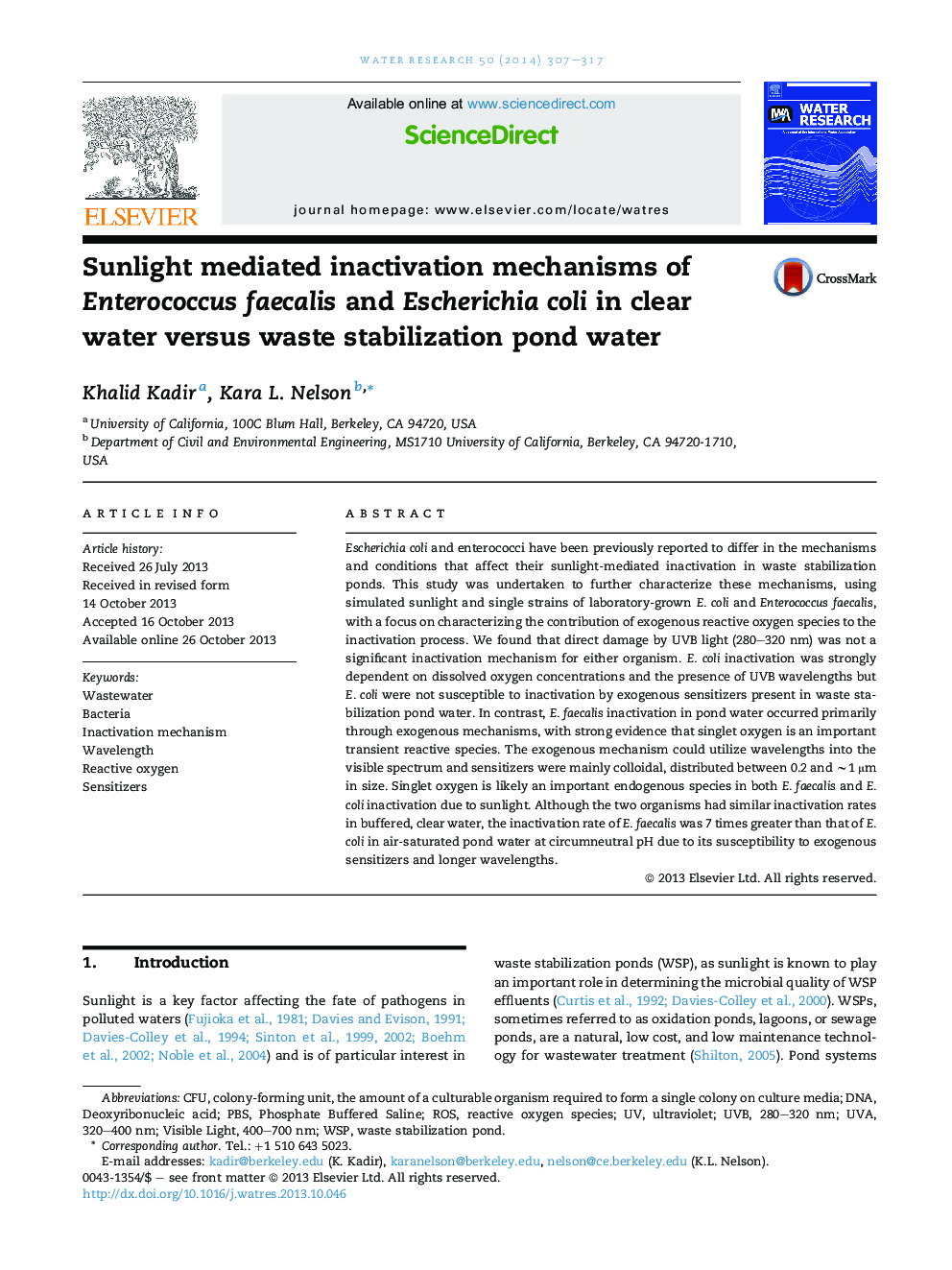| Article ID | Journal | Published Year | Pages | File Type |
|---|---|---|---|---|
| 6367000 | Water Research | 2014 | 11 Pages |
Abstract
Escherichia coli and enterococci have been previously reported to differ in the mechanisms and conditions that affect their sunlight-mediated inactivation in waste stabilization ponds. This study was undertaken to further characterize these mechanisms, using simulated sunlight and single strains of laboratory-grown E. coli and Enterococcus faecalis, with a focus on characterizing the contribution of exogenous reactive oxygen species to the inactivation process. We found that direct damage by UVB light (280-320 nm) was not a significant inactivation mechanism for either organism. E. coli inactivation was strongly dependent on dissolved oxygen concentrations and the presence of UVB wavelengths but E. coli were not susceptible to inactivation by exogenous sensitizers present in waste stabilization pond water. In contrast, E. faecalis inactivation in pond water occurred primarily through exogenous mechanisms, with strong evidence that singlet oxygen is an important transient reactive species. The exogenous mechanism could utilize wavelengths into the visible spectrum and sensitizers were mainly colloidal, distributed between 0.2 and â¼1 μm in size. Singlet oxygen is likely an important endogenous species in both E. faecalis and E. coli inactivation due to sunlight. Although the two organisms had similar inactivation rates in buffered, clear water, the inactivation rate of E. faecalis was 7 times greater than that of E. coli in air-saturated pond water at circumneutral pH due to its susceptibility to exogenous sensitizers and longer wavelengths.
Keywords
Related Topics
Physical Sciences and Engineering
Earth and Planetary Sciences
Earth-Surface Processes
Authors
Khalid Kadir, Kara L. Nelson,
